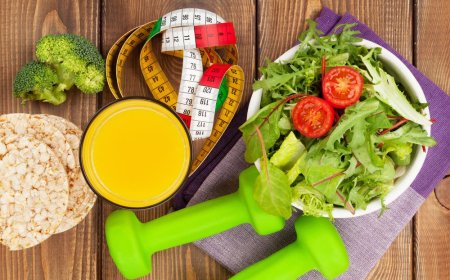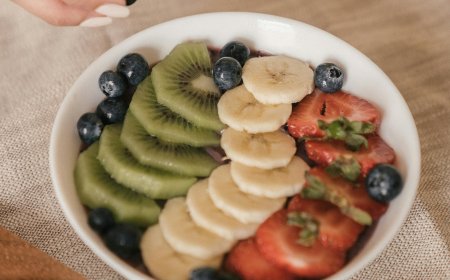"Effective Weight Loss Strategies: How to Shed Pounds Without Sacrificing Nutrition"
Losing weight while maintaining proper nutrition can seem like a daunting challenge. Many weight loss strategies involve drastic dietary restrictions or depriving yourself of essential nutrients, but this approach can lead to health issues and unsustainable results.

Understanding Weight Loss and Nutrition
Before diving into strategies, it’s crucial to understand the relationship between weight loss and nutrition:
- Weight Loss Basics: To lose weight, you need to create a caloric deficit, which means consuming fewer calories than you expend. However, this doesn’t mean you have to compromise on nutrient intake.
- Nutritional Balance: Proper nutrition is essential for maintaining energy levels, supporting bodily functions, and promoting overall health. A diet lacking in essential nutrients can lead to deficiencies and negatively impact your well-being.
Key Strategies for Effective Weight Loss
1. Prioritize Nutrient-Dense Foods
Why It Matters: Nutrient-dense foods provide essential vitamins, minerals, and other nutrients with fewer calories. This approach ensures you get the nutrients you need without overeating.
Examples:
- Vegetables: Leafy greens, bell peppers, broccoli, and carrots.
- Fruits: Berries, apples, oranges, and kiwi.
- Lean Proteins: Chicken breast, tofu, legumes, and fish.
- Whole Grains: Quinoa, brown rice, oats, and barley.
How to Incorporate: Fill half your plate with vegetables, include a serving of fruit with your meals or snacks, and choose whole grains over refined grains.
2. Adopt a Balanced Macronutrient Approach
Why It Matters: Balancing macronutrients—carbohydrates, proteins, and fats—helps regulate appetite, energy levels, and muscle maintenance.
Carbohydrates: Opt for complex carbs like whole grains, fruits, and vegetables that provide sustained energy and fiber.
Proteins: Include lean protein sources to promote muscle repair and satiety. Examples include chicken, fish, legumes, and low-fat dairy.
Fats: Choose healthy fats like avocados, nuts, seeds, and olive oil. These fats support brain health and hormone production.
How to Incorporate: Aim for a balanced plate with a portion of protein, a serving of healthy fats, and a generous helping of complex carbs.
3. Practice Portion Control
Why It Matters: Portion control helps manage calorie intake without the need for restrictive dieting. It allows you to enjoy a variety of foods while still creating a caloric deficit.
Tips:
- Use Smaller Plates: Smaller plates can help control portion sizes visually.
- Read Labels: Pay attention to serving sizes on nutrition labels.
- Listen to Your Body: Eat until you’re satisfied, not stuffed.
How to Incorporate: Start by serving smaller portions of higher-calorie foods and fill up on low-calorie, nutrient-dense options.
4. Incorporate Mindful Eating
Why It Matters: Mindful eating helps you become more aware of your hunger and fullness cues, which can prevent overeating and enhance your overall eating experience.
Tips:
- Eat Slowly: Take time to savor each bite and chew thoroughly.
- Avoid Distractions: Eat without distractions like TV or smartphones.
- Pay Attention to Hunger Cues: Eat when you're hungry and stop when you're full.
How to Incorporate: Set aside time for meals, focus on the taste and texture of your food, and avoid eating on the go.
5. Stay Hydrated
Why It Matters: Proper hydration is essential for overall health and can help control appetite and metabolism. Sometimes, thirst can be mistaken for hunger, leading to unnecessary snacking.
Tips:
- Drink Water Regularly: Aim for at least 8 glasses of water a day.
- Incorporate Hydrating Foods: Eat foods with high water content like cucumbers, watermelon, and oranges.
How to Incorporate: Carry a water bottle, drink a glass of water before meals, and opt for herbal teas as a hydrating beverage.
6. Plan and Prepare Meals
Why It Matters: Meal planning and preparation help you make healthier choices and control portion sizes, reducing the likelihood of impulsive eating.
Tips:
- Create a Weekly Meal Plan: Plan your meals and snacks for the week to ensure balanced nutrition.
- Batch Cook: Prepare and portion meals in advance to make healthy eating more convenient.
- Keep Healthy Snacks on Hand: Have nutritious snacks available to avoid reaching for unhealthy options.
How to Incorporate: Spend a few hours each week planning and prepping meals, and keep a variety of healthy snacks readily available.
7. Engage in Regular Physical Activity
Why It Matters: Exercise not only helps create a caloric deficit but also supports muscle maintenance, improves metabolism, and enhances overall health.
Tips:
- Find Activities You Enjoy: Choose exercises that you find enjoyable and sustainable.
- Mix Cardio and Strength Training: Combine aerobic exercises with strength training for optimal results.
- Stay Consistent: Aim for at least 150 minutes of moderate exercise or 75 minutes of vigorous exercise per week.
How to Incorporate: Incorporate physical activity into your daily routine, whether it’s through structured workouts or active hobbies.
Overcoming Common Challenges
1. Cravings
Solution: Address cravings by finding healthier alternatives or allowing yourself a small, satisfying portion of the desired food. Sometimes, cravings are more about habit than actual hunger.
2. Busy Schedules
Solution: Plan ahead with quick and easy meal options. Batch cooking and using time-saving kitchen gadgets can make healthy eating more manageable.
3. Social Situations
Solution: Communicate your dietary goals with friends and family, and focus on enjoying the social aspects of gatherings. You can also bring a healthy dish to share.
Conclusion
Shed pounds effectively without sacrificing nutrition by adopting a balanced, sustainable approach. Prioritize nutrient-dense foods, balance your macronutrients, practice portion control, and stay hydrated while incorporating mindful eating habits.
What's Your Reaction?






















































































